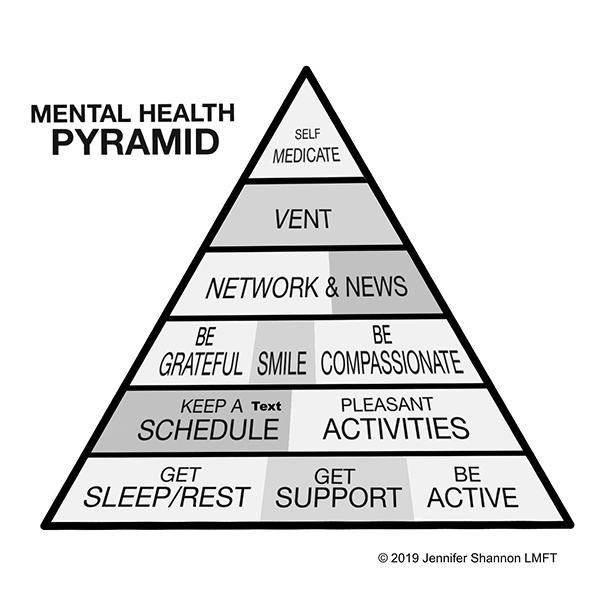
Uncertainty is inevitable in life. My personal practice, and the one I teach my clients and that I write about in my books, is that the more we can accept uncertainty, the more calm, grounded, and resilient we are. But I could accept uncertainty a little better if things weren’t so up in the air just now!
As wildfires rage in California, many of us have lost power and were evacuated from our homes. What should we pack? How long will we be gone? Where will we go? How long will the power be out? How strong will the winds get and what direction will they blow? Will my house burn down? For some of us this question was, will our house burn down again? So much is at stake, and so much is unknown. How do we cope with uncertainty and the anxiety it causes?
The anxiety we felt when the fire and evacuations began is the sympathetic— flight-fight —branch of our nervous system. It helped me focus when I was evacuating with my dog and my aged mother, packing underwear, warm clothes, medications, flashlights, batteries, water— things that would help us to survive. Thank you monkey mind!
Once we were safely situated, we want our nervous system to switch over to the parasympathetic nervous system, the one that allows us to the rest, relax and digest. Animals are great at this. If a deer sees you, its body tenses, ready to run. But once it recognizes you are not a threat and you walk on by, they go back to grazing moments later as if nothing happened. We humans are not so good at this. Once the imminent threat passes, we start to fret about money lost from the power outage, what to do with rotting food, and when will this happen again? We do, however, have the same ability as the grazing deer, we just need to help activate the parasympathetic nervous system.
We are all familiar with the healthy food pyramid that best supports our physical health. I’ve constructed a mental health pyramid that you may find especially useful in times of heightened uncertainty.
Bottom level 1:
Sleep, and if you are having trouble sleeping, rest. Contact with supportive friends/relatives; relaxation activities like meditation, guided visualizations, being in nature; exercise, which can be just 5 minutes of a brisk walk, gentle stretching, coming home to the body.
Level 2:
Keep to some kind of schedule if possible, getting up and going to bed around the same time. Think about things that you do daily, and see which ones you can still do even when life is topsy-turvy. Try to do at least two pleasant activities each day. This could be reading a book, playing with your pet, or listening to music if you have access to it.
Level 3:
Smile at others. Smiling actually releases endorphins (feel good chemicals we naturally produce) in both the giver and the receiver. Say out loud or write down three things you are grateful for. Be forgiving and gentle with yourself and others.
Level 4:
Checking newsfeeds and social media. We need to know what is happening in the world and with our friends and relatives, but if you are checking your cell phone every few minutes and are not in imminent threat, try to decrease it to once or twice an hour.
Level 5:
Complaining or asking why is this happening. It is natural to want to vent, but too much of it will make us feel worse.
Level 6:
Comfort food; alcohol or other synthetic relaxants;
Whether we are recovering from the threat of regional emergency like a wildfire, or from an illness, a job loss, or other personal stressor, we are always wise to remember what behaviors encourage the rest and digest branch of our nervous system. These self-care behaviors are the foundation for a healthy state of mind and body. They are how we feed ourselves, not the monkey!


I’m sorry you’re being faced with this again! Your pyramid is useful to have — I’m going to copy it for when the expected humongous earthquake strikes in the PNW ( or we get more wildfires or ???) One question about the pyramid: are you advocating self-medication? As a last resort? — or as the highest and best strategy? I’m not clear on that. Thanks for your articles!
Hi Susie, Yes, I got some feedback that the top of the pyramid was confusing. Self-medication should be used sparingly. The bottom of the pyramid shoud be used a lot 😊